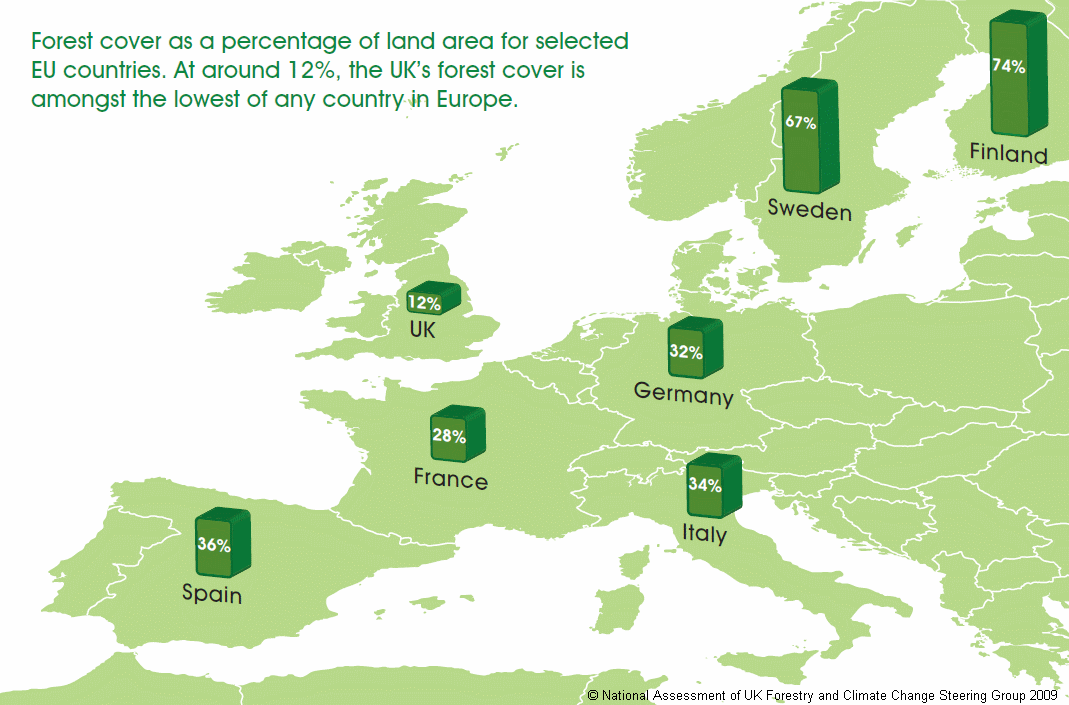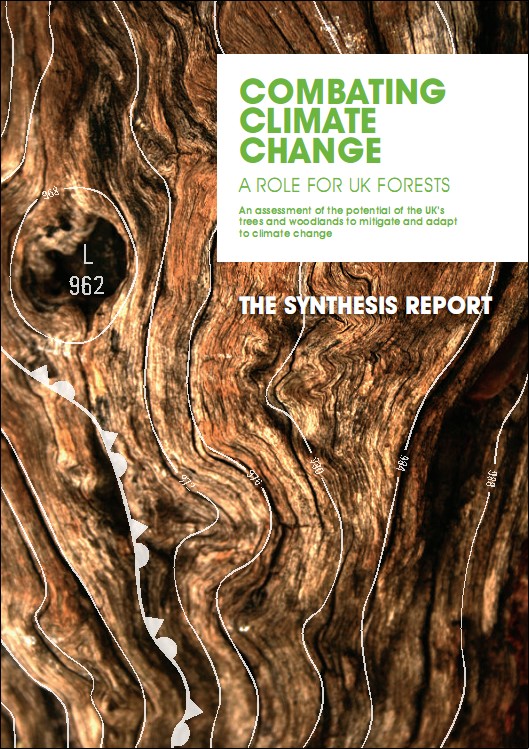Plant Now and Use Sustainably
In the climate change debate there's been a lot of talk about current Amazonian rainforest deforestation, but I've heard much less about the role of the UK's forests for carbon sequestration. Given the relative size of the UK to the Amazonian rainforest that's not so surprising - The Nature Conservancy suggests the area of rainforest cut down each year (20 million hectares) is the same as the combined area of England, Scotland and Wales. The estimated 5000 years it took [.pdf] to go from 75% of the UK covered by forests and woodlands to the current 12% just doesn't compare.

Recently, however, the case been made for increasing UK forest and woodland cover as a form of climate change mitigation. This summer the UK Low Carbon Transition Plan identified woodland creation as a cost-effective way of mitigating climate change and recognised the importance of supporting tree-planting initiatives. More recently, the National Assessment of UK Forestry and Climate Change Steering Group has provided its response to the IPCC Fourth Assessment Report and argues there is a clear need for more woodlands.

One of the main findings of this initial assessment was that an increase in woodland area of 23,000 ha per year over the next 40 years could abate 10% of UK 2050 greenhouse gas emissions. With echos of the recommendation from the Stern Review on the Economics of Climate Change to 'Act now or pay later', the key message from this assessment is 'Plant now and use sustainably'. The long maturation times of forest systems means that it may take take 50–100 years for actions to pay off.
Being such a long-standing investment it's vital that the benefits of planted woodlands and forests are not outweighed by negative impacts on biodiversity, food security, landscape and water supply. From this stand-point there is much to be done and the assessment recommends that "further scientific and socio-economic analysis is required to enable the UK to achieve the full [climate] adaptation and mitigation potential of forestry" and that "clear, robust, research programmes will be needed to underpin the changes of forestry policy and practice which are required to meet the new and challenging circumstances".
A question that immediately springs to my mind is where these woodlands should be placed to maximise their carbon sequestration payoff while minimising negative impacts on other aspects of the landscape. For example, if arable agricultural land is to be converted, how will biodiversity be affected by the removal of hedgerows? What would this conversion of agricultural land mean for local economies? Which species will benefit in terms of habitat connectivity and which will lose out? Addressing questions like these will be important as forest policy moves toward returning UK forest cover area near levels seen elsewhere in Europe.

Recently, however, the case been made for increasing UK forest and woodland cover as a form of climate change mitigation. This summer the UK Low Carbon Transition Plan identified woodland creation as a cost-effective way of mitigating climate change and recognised the importance of supporting tree-planting initiatives. More recently, the National Assessment of UK Forestry and Climate Change Steering Group has provided its response to the IPCC Fourth Assessment Report and argues there is a clear need for more woodlands.

One of the main findings of this initial assessment was that an increase in woodland area of 23,000 ha per year over the next 40 years could abate 10% of UK 2050 greenhouse gas emissions. With echos of the recommendation from the Stern Review on the Economics of Climate Change to 'Act now or pay later', the key message from this assessment is 'Plant now and use sustainably'. The long maturation times of forest systems means that it may take take 50–100 years for actions to pay off.
Being such a long-standing investment it's vital that the benefits of planted woodlands and forests are not outweighed by negative impacts on biodiversity, food security, landscape and water supply. From this stand-point there is much to be done and the assessment recommends that "further scientific and socio-economic analysis is required to enable the UK to achieve the full [climate] adaptation and mitigation potential of forestry" and that "clear, robust, research programmes will be needed to underpin the changes of forestry policy and practice which are required to meet the new and challenging circumstances".
A question that immediately springs to my mind is where these woodlands should be placed to maximise their carbon sequestration payoff while minimising negative impacts on other aspects of the landscape. For example, if arable agricultural land is to be converted, how will biodiversity be affected by the removal of hedgerows? What would this conversion of agricultural land mean for local economies? Which species will benefit in terms of habitat connectivity and which will lose out? Addressing questions like these will be important as forest policy moves toward returning UK forest cover area near levels seen elsewhere in Europe.
Labels: Ecological, Forests, Landscapes, Sustainability

This work by James D.A. Millington is licensed under a Creative Commons Attribution-Noncommercial-Share Alike 3.0 United States License.


0 Comments:
Post a Comment
<< Home